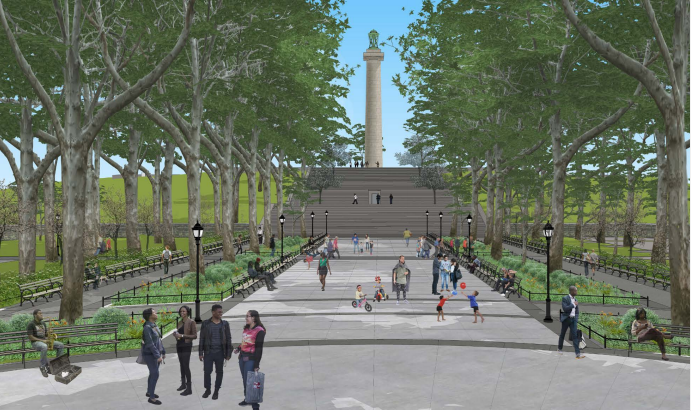City’s plan to remove trees from Fort Greene Park hits a snag

Activists won a new round in their legal fight against a city project that would remove dozens of mature, healthy trees from Fort Greene Park and destroy park features designed by famous landscape artists.
New York Supreme Court Justice Julio Rodriguez issued a ruling on Thursday, Jan. 9 in a case brought by the Sierra Club, the Friends of Fort Greene Park, City Club of New York President Michael Gruen and several Fort Greene residents challenging a $10.5 million city project to rebuild the north side of the park.
The judge ordered the Parks Department to better explain its reasoning for categorizing a project — which includes removing 83 trees and paving over grass and Belgian stonework to create a 13,300-square-foot plaza — as routine maintenance. Parks’ categorization allows the agency to sidestep required due diligence.
